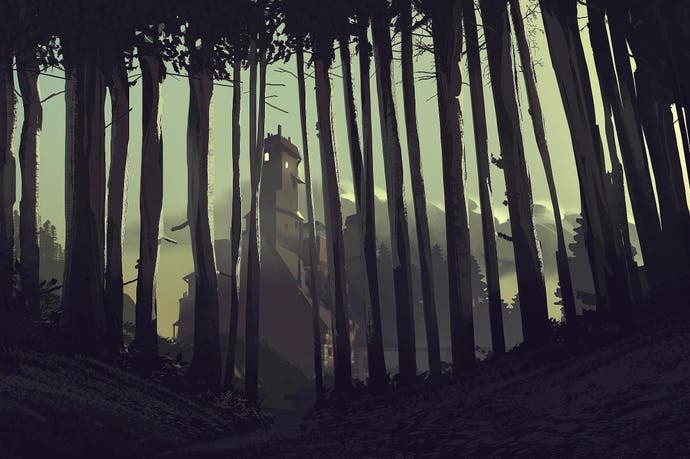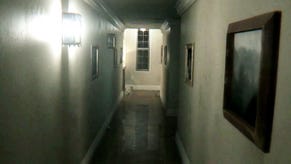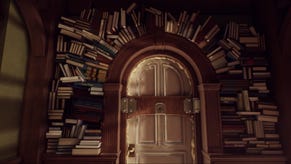What Remains of Edith Finch review
A house of many rooms.
Sometimes, in the aftermath of an unexpected bereavement, a family will leave their departed loved one's bedroom unchanged for weeks, months, maybe even years. The preserved room serves as a walk-in memorial, a place to feel close to the departed (their beloved books heavy on the shelf, their smell soft on the pillow), to keep them in the present even as time shunts them ever further into the past. It's a way to wrest control back from fate's capriciousness: fortune may have taken this person from me, but I choose when to let them go.
The Finches, a family that came to America from Norway in 1937, have endured more unexpected bereavement than most. Tragedy has been so frequent a visitor to the Finches that they were once described as America's "most unfortunate family." In seven decades no fewer than ten Finches died in or near to the family home. In this way the house has become a warren of memorials: each of its bedrooms, studies and basements sit sealed in time, as if waiting for an occupant to return.

In 2016, one occupant does return: Edith Finch. Six years ago, believing theirs to be a localised curse confined to the house, Edith's mother scooped up what remained of her family and fled. The house has since stood empty. After inheriting the home, Edith, looking to confront or at very least face her family's sad past, sets about unpicking its various locks and secrets. "Whatever's wrong with this family," she says, soon after she crawls through a kitchen cat flap to gain entry, "goes back a long way."
Those secrets are spilled, primarily, by the letters and diaries left in the time-locked rooms. Each snippet triggers lengthy, vivid flashbacks, and in this way you come to understand how each Finch lived and, in most cases, how they died. This dour premise does not play out as you might expect: the game is neither macabre nor unsettling. Yes, the house may be full of ghosts, but this is not a game played for scares. In part, that's because of the role you're in: Edith is a Finch, ergo these spectres are her people. But it's also in the delivery, which is melancholic (helped enormously by Jeff Russo's exquisite, mournful score) rather than frightening, and kooky rather than alarming. This tour is reflective, and while the game could reasonably be described as magical realism snuff, it also offers, in its way, a quietly affecting celebration of life.
The house emerges as one of video games' most memorable characters. Edith's great grandmother, Edie, was a playful architect, and this is a warren of secret passages. Locks hide inside books. Books hide inside locks. The house appears to have been built upon to accommodate each successive generation of Finch, with the kind of weird protrusions and extensions that would cause a building inspector to blanche. There is "too much of it" Edith says of the house, "like a smile with too many teeth." Stag beetles under glass hang on the walls. The shelves sag under the weight of all the paper: Calvino's Invisible Cities, Homer's The Odyssey, a fat compendium of Norwegian Folktales. And each bedroom reflects the character and interests of its vanished inhabitant. Posters line the saccharine den that once belonged to Edith's great aunt Barbara, a child star betrayed, as they so often are, by the arrival of puberty. Lewis's room is a shrine to weed and video games, his flashback a cautionary tale of a life devoted to chasing virtual success.
What Remains of Edith Finch fits into the tradition that is often and disparagingly known as the 'walking simulator': you move through a series of environments triggering the next dose of narrative. But the genre descriptor flattens what is a rich and inventive piece of interactive work. One diorama plays out inside the panels of a comic book. Another has you controlling two scenes at once, split across the scene, using each analogue stick. There is a one-to-one mapping when you twirl the controller to wind a music box, or tear the lid from a tin of peaches with a can opener, which stiffens the link between character and player in subtle yet affecting ways.

Text plays a crucial role in the game, too. Much of the script is made incarnate, scrawled momentarily on a wall or a doorway. Letters then scatter like dandelion fronds in the wind, while sentences flutter like a kite's tail in the wind. These aren't mere animator's flourishes. They contribute to the rich texture of the story, which is both novelistic, filmic and something somehow unique to games too. The final pay-off is gently ambiguous.
But the broader message, of the power stories can hold over generations and the way in which those stories can be not only instructive but also restrictive, is fully earned. This is studied, careful world-building and storytelling, and the spell it succeeds in casting is quite unlike that of any game that has come before.



















